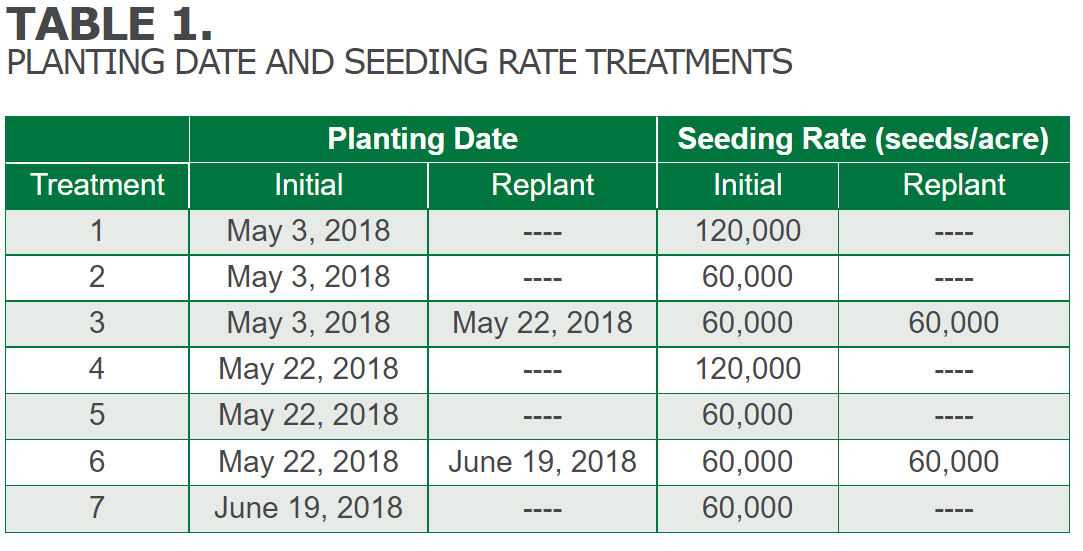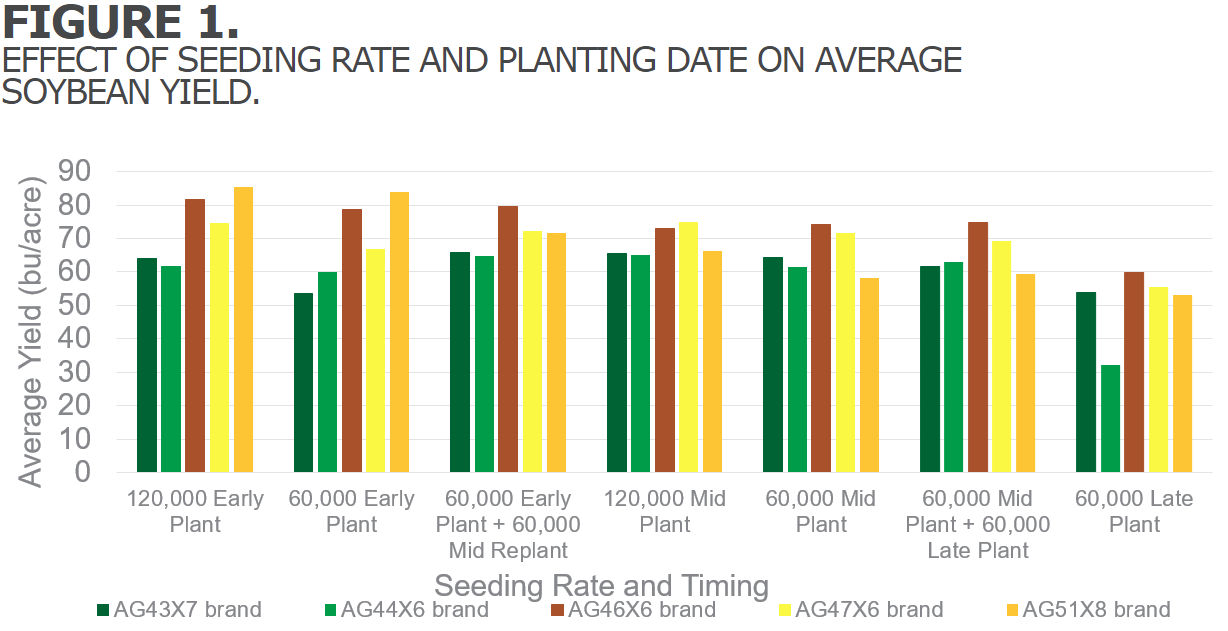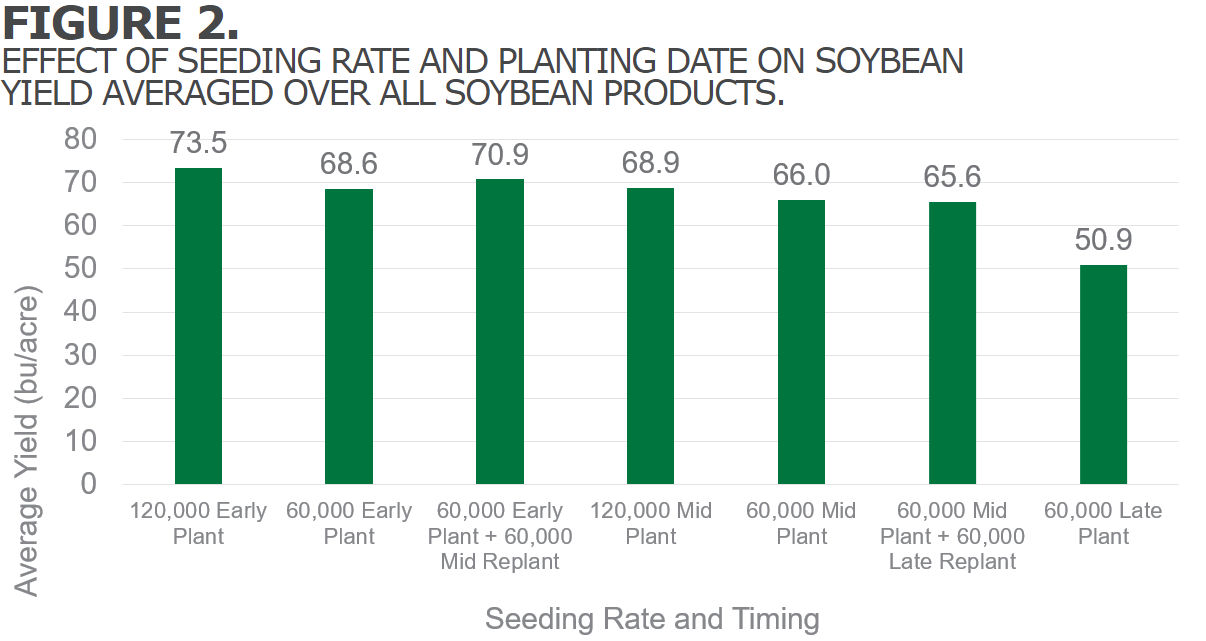Evaluating Replant Decisions for Asgrow® Soybean Brands
January 26, 2018
TRIAL OBJECTIVE
Replant decisions are made by Midsouth producers every year. Previous demonstration studies at the Bayer Learning Centers have shown soybean’s ability to compensate for stand loss.
This demonstration study evaluated two seeding rates and three planting dates in order to compare a ‘normal’ stand (120,000 seeds/acre), a reduced population stand (60,000 seeds/acre), and replanting into an existing stand (60,000 seeds/acre replanted with 60,000 seeds/acre).
RESEARCH SITE DETAILS
| Location | Scott, MS |
| Soil Type | Silt loam |
| Previous Crop |
Soybean |
| Tillage Type |
Conventional |
| Planting Date | Various |
| Harvest Date |
10/08/2018 |
| Potential Yield (bu/acre) |
80 |
| Seeding Rate (seeds/acre) |
Various |
Five Asgrow® brand soybean products were planted in 0.1-acre, non-replicated demonstration plots and were managed according to standard agronomic practices for the region.
Plots were planted on 38-inch single-row beds. Replanted portions of the plot were interseeded directly on the bed between the initial soybean plants.
Data was adjusted for moisture as needed.

UNDERSTANDING THE RESULTS
Results from this research support the observation that soybeans have a tremendous ability to compensate for missing plants (Figure 1 and 2). For the early and mid planting dates, the 60,000 seeds/acre treatment yielded nearly the same as the 120,000 seeds/acre treatment.


This study found that there was no yield advantage to filling in thin stands (Figure 1 and 2). For the earliest planting date, replanting 60,000 seeds/acre into an existing 60,000 seeds per acre only resulted in a yield increase of 2.3 bu/ acre. For the mid planting date, yield was reduced slightly. This is due to the potential damage the second planting can cause to the original stand and the lower yield potential of the later planting because of the later planting date and competition from the original stand.
A reduction in yield was observed with the 60,000 seeds/acre seeding rate at the late planting date (Figure 1 and 2). As a general rule, lower yield potential can be expected with later planting dates.
This data agrees with much of the previous Learning Center work regarding soybean stands, that favorable yields can be expected with a seeding rate as low as 60,000 seeds/acre if the skips are uniformly distributed and optimum planting dates are used.
WHAT DOES THIS MEAN FOR YOUR FARM?
Previous research and Bayer Learning Center demonstrations have indicated that soybean is able to compensate well for stand loss in the field.
This demonstration study showed that a suboptimal soybean stand could be kept rather than replanting or reseeding additional seeds into the existing stand.
This study only evaluated soybean replanting in terms of yield. Producers should consider this data in conjunction with the economics of the replant decision (current soybean price, additional fuel, labor, and input costs) to determine if replanting will increase their economic return.
181113071545